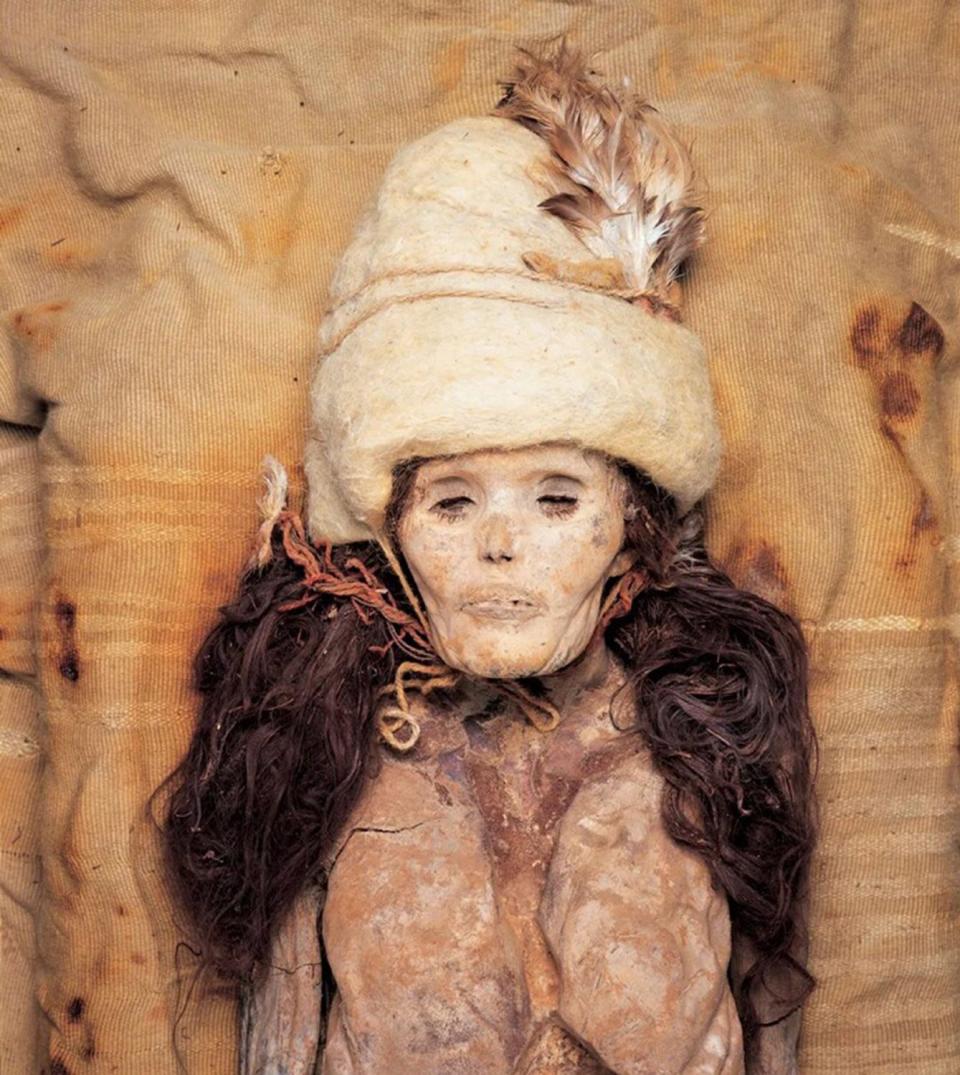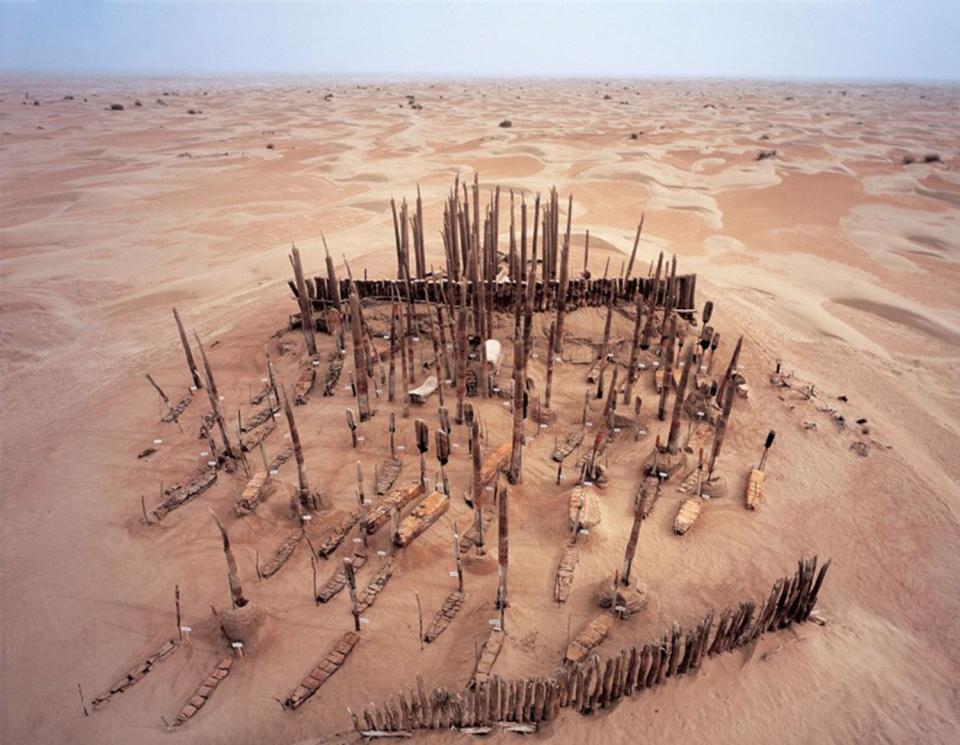New Details of 'Extraordinarily Preserved,' 4,000-Year-Old Mummies Emerge Before Halloween

Wenying Li, Xinjiang Institute of Cultural Relics and Archaeology
Scientists may have finally solved a decades-old mystery about the origins of a group of surprisingly preserved mummies found in China's Tarim Basin during the 1990s.
In a report published in Nature, researchers announced that the group of mummies that many believed were migrants who had traveled to China to share farming practices may have been indigenous people who learned agricultural techniques from neighboring groups.
Researchers used genomic analysis to trace the ancestry of the mummified farmers to "Stone Age hunter-gatherers who lived in Asia some 9,000 years ago," the report explains.
"The mummies have long fascinated scientists and the public alike since their original discovery. Beyond being extraordinarily preserved, they were found in a highly unusual context, and they exhibit diverse and far-flung cultural elements," said study co-author Christina Warinner, a molecular archaeologist at Harvard University, according to CNN.
"We found strong evidence that they actually represent a highly genetically isolated local population," she added.
RELATED: Explorers Discover 2,500-Year-Old High Priest Mummy on Live TV: 'The Thrill of a Lifetime'

Wenying Li, Xinjiang Institute of Cultural Relics and Archaeology
The mummies were first discovered in the early twentieth century in the Xinjiang region of China, a desert area that is known for being "one of the most hostile places on Earth," Alison Betts, an archaeologist at the University of Sydney in Australia," said in a statement.
The bodies were buried in boat-shaped coffins and wrapped in cattle hide, which, combined with the hot and salty environment of the desert, kept them naturally preserved, the researchers said.
"We knew an awful lot about these people, physically, but we knew nothing about who they were and why they were there," Betts explained.
RELATED: Egypt Holds a 'Once in a Lifetime' Gala Parade for Transport of Royal Mummies to New Museum
It's believed they were buried in the area starting 2,000 or more years ago.
Scientists sequenced the genomes — which contain all the genetic information of an organism — of 13 people who lived "between 4,100 and 3,700 years ago and whose bodies were found in the lowest layers of the Tarim Basin cemeteries in southern Xinjiang."
They then compared the genetic profiles to more than 100 ancient populations, and 200 modern groups of people, and matched some of their genetic makeup to Bronze Age migrants from Central Asia who lived around 5,000 years ago, the researchers said.
However, 13 of the mummies did not match this profile and were found to be related to hunter-gatherers "who lived in southern Siberia and what is now northern Kazakhstan some 9,000 years ago."
RELATED VIDEO: Josh Gates Talks Opening Egyptian Sarcophagus on Live TV
"This was a region of incredible crossroads. There was vibrant mixing of North, South, East and West going back as far back as 5,000 years," Michael Frachetti, a professor of anthropology at Washington University, who wasn't involved in the study, told CNN.
He continued: "It makes it all the more paradoxical in a way that you have a community which is heavily integrated from cultural perspectives, but who maintain some very, very iconic and unique components of their own local ideology, local culture, local burial traditions as well as a seemingly unmixed genetic profile that goes back even further into deep time primordial ancestry."

 Yahoo Finance
Yahoo Finance 